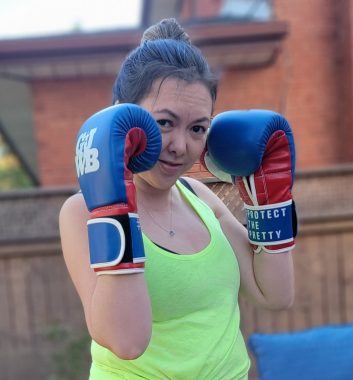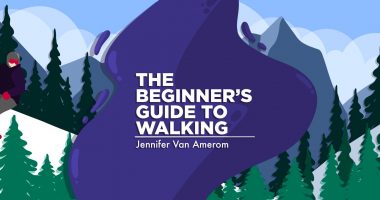Movement in the Recovery From Transverse Myelitis

“Can you walk down the hall for me, please?” My specialist, with a stern look on her face, waits patiently. “And back again toward me now.”
It feels so ridiculous that, as a 40-year-old woman, I’m being asked to do this. I steady myself and walk down the hallway. I will supermodel stomp down this hall. I will sashay and sling my handbag over my shoulder, then strike a pose. I’m sure my brazen attitude is tempting fate, but I can’t help myself.
Knowing I can walk today feels so good.
The girl I am
If you had told me that from the age of 28, I’d be asked to walk at every doctor appointment, I’d have laughed at you. I’m that girl with a pair of high heels for every cocktail dress, season, and event in her closet. With a 6-foot-5 husband, the sky is the limit, so I can wear any height in heels I want. I can run — no, sprint — in heels, and look fabulous doing it. There are leopard print heels, firetruck shiny red ones, deadly black pumps, and princess sparkles.
I took those heels for granted. I took movement for granted, which is surprising because I grew up dancing. The studio was my safe haven. There’s no perfection in movement, but that’s what you strive for as a dancer.
Muscle memory
When my transverse myelitis (TM) attack happened, it felt like a bad dream. I was almost awake, but not enough to control my body. It was an out-of-body experience — like when the alarm goes off, you hear it, and for that split second you can’t stretch your arm out to turn it off. That’s what TM felt like with my legs. Except it wasn’t a split second; it was an agonizing five months that left me with residual numbness forever.
At first, I did the bare minimum my physiotherapist assigned me. Then I urinated on myself in front of my future mother-in-law and I decided that this wouldn’t be my future.
I imagine a major attack on the central nervous system is almost like a data attack on a computer. The data is still there, but it’s tough to access it. What saved my future was the belief in muscle memory. Maybe I can’t feel it right now, but somewhere deep in my brain’s cortex it can download instructions to my limbs and tell them to move. So I kept thinking about every movement, just like I did as a dancer, and eventually, the toes started to wiggle.
The magic of movement
Fast forward almost 13 years and I’m still walking. I’ve even completed a couple of 5- and 10-kilometer races. I’m less comfortable in heels since the pandemic, but I won’t hesitate to put on a pair should the need arise.
Not every day is a good day, though. I can feel off-balance sometimes, and my legs usually feel like lead. It takes effort to move. I use a disabled permit on the days when the bare minimum movement is all I can handle. Fatigue is a nasty beast, and life waits for no one.
My best 10 seconds
I don’t take movement for granted anymore. In fact, I worship it now. Muscle memory is real. At times exercise and movement can feel overwhelming, even frustrating when you’re this sick, but I believe it’s partly what will keep this disease at bay.
What’s difficult is how my body never reflects my effort. I lose the weight, get into shape, only to fall back down, load up on steroids, and start the cycle again. What’s worse is dealing with the looks every time my weight fluctuates. It’s substantial, and the weight always shows in the stomach. Unless there’s a cure, over the long term I won’t win the war, but I’m certainly going to try to win the battle today, with one toe wiggle, step, or sashay at a time.

Jennifer trains in her backyard last year. (Photo by Sophie Drolet)
Now I enjoy boxing, which is a lot like dancing. You have to be light on your feet, know how to control your body to execute moves, and think while you do it. My (shadow) boxing trainer always asks for my best 10 seconds at the end of the round. It’s when you give it your all so the judges are convinced you should win the round.
That’s how I approach each day with movement. If standing in the kitchen, walking the dog, running errands, or taking a boxing class is the last thing I’m able to do, forever, it will definitely be the best version of my 10 seconds.
Note: Neuromyelitis News is strictly a news and information website about the disease. It does not provide medical advice, diagnosis, or treatment. This content is not intended to be a substitute for professional medical advice, diagnosis, or treatment. Always seek the advice of your physician or other qualified health providers with any questions you may have regarding a medical condition. Never disregard professional medical advice or delay in seeking it because of something you have read on this website. The opinions expressed in this column are not those of Neuromyelitis News or its parent company, BioNews, and are intended to spark discussion about issues pertaining to neuromyelitis optica spectrum disorder (NMOSD).







Comments